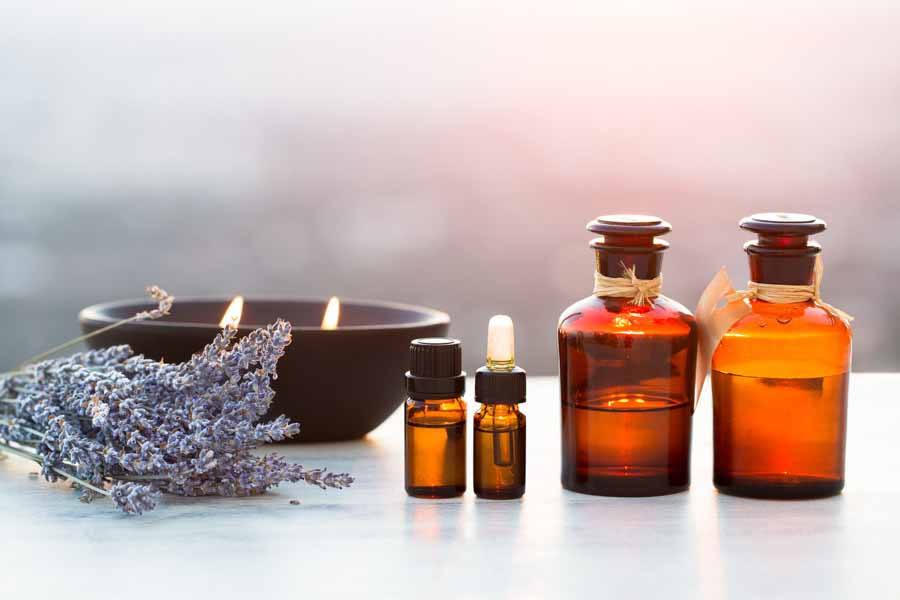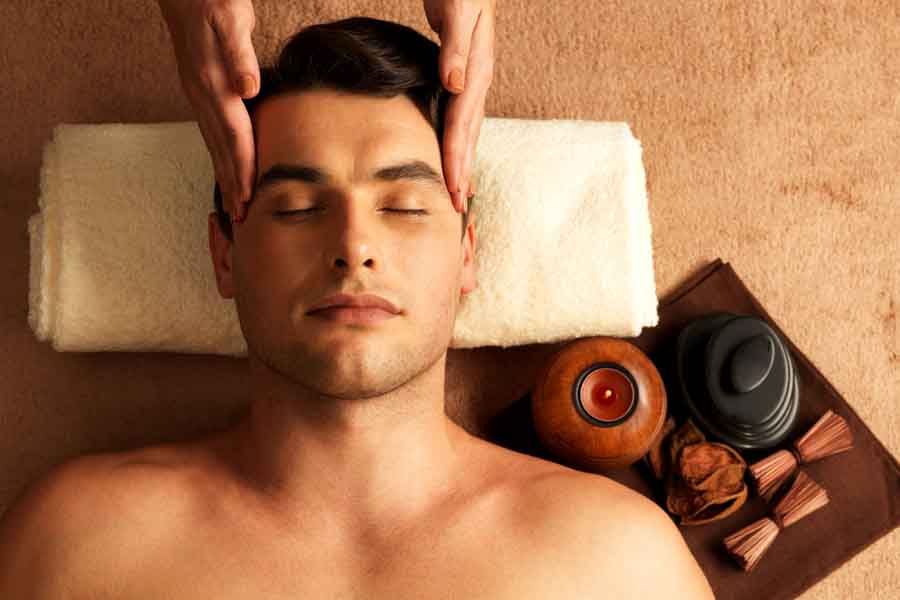
Benzoin Essential Oil: A Jack of All Trades Since Ancient Times
While many essential oil users are familiar with common oils, like lavender and rose, they may be less knowledgeable about benzoin essential oil, which is a shame. Benzoin derivatives are some of the most versatile agents in the natural world. If you don’t know where to use this warm, rich essential oil that comes from tree resin, keep reading. You’ll want to add benzoin essential oil to your oil toolbox once you learn its many uses for your health and well being.
The Origins of Benzoin Essential Oil
Benzoin essential oil comes from the Styrax benzoin tree, but not from its little white flowers. Instead, the tree is tapped for sap, and the residual gummy resin from the bark is used to make benzoin products via the process of solvent extraction. In essence, one liquid is transformed into another this way.
Styrax benzoin trees were originally found primarily in Vietnam and Laos, but now they are also grown in Malaysia and on the islands of Sumatra and Java in Indonesia. A typical Styrax benzoin tree will produce sap and resin for about 15 to 20 years.
The resin from benzoin trees can be turned into other formulations besides essential oils. Sometimes it is dried and made into a powder, and it is also made into simple and compound tinctures. A tincture is a solution in which the benzoin is dissolved in alcohol and often used for medicinal purposes.
Today benzoin is a common base for perfumes and scent products, and it is also, because of its resinous nature, an ideal fixative for cold tablets, lozenges, and cosmetics. Tincture of benzoin can be found in ballerinas’ medicine cabinets around the globe; they take advantage of its vulnerary (wound protecting) properties to treat sores and blisters incurred by dancing on their toes and to protect their feet from further assault. It also helps keep blister pads in place by virtue of its resinous consistency.
Benzoin emits a strong vanilla aroma, as it contains vanilla aldehydes (a type of chemical compound), with a whiff of cinnamon from its cinnamic acid. This makes benzoin also a popular ingredient in incense, and it has been used in this manner for thousands of years. Inhaling benzoin can assist with healing respiratory illnesses, and this versatile natural product is also an antiseptic, an anti-inflammatory, an antispasmodic, a natural deodorant, and a mood lifter.
In the medical and dental environments, benzoin plays a strong role too. It is often used to help seal respiratory equipment, like ventilator masks, and adhere tooth varnishes. Practitioners know benzoin is safe to use in those applications and that it actually enhances the process with its natural antimicrobial properties.
Benzoin Essential Oil Throughout History
Benzoin was used in its various forms by the Ancient Greeks (who called it Silphion) and the Romans (who called it laserpitium). Benzoin was often given as a gift between royalty, and it was highly prized for its medicinal properties and its ability to enhance scented products. The Ancient Mayans also used benzoin for fumigation and in incense made to chase off malevolent spirits.
It is believed that the Portuguese navigator Barboza introduced benzoin to Western Europe, and references to it there go as far back as the 1500s, where it was sometimes called “Benjamin” and later “gum benzoin.” Recipes including benzoin were found in a book by the French apothecary and seer Nostradamus. Benzoin was known as “baume pulmonaire” in France, which means “pulmonary balsam,” and it was burned and inhaled to treat respiratory conditions there.
Blending Benzoin Essential Oil with Other Essential Oils

As noted above, benzoin is a key ingredient and base note in many perfume products because it fixes or holds scent and improves the mixing of other aromas. If you enjoy making homemade perfumes or soaps, benzoin essential oil is a must have. Benzoin essential oil has been used for centuries in potpourri mixes too, and it likewise helps make the scent in potpourri last longer and be more noticeable.
Benzoin essential oil blends perfectly with many other essential oils because of its vanilla elements. In addition to frankincense and myrrh, benzoin essential oil will be wonderful with the following:
- sandalwood
- cedarwood
- vitiver
- juniper
- coriander
- lavender
- rose
- patchouli
- petitgrain
- citrus oils: sweet orange, mandarin, bergamot, neroli, lemon, and tangerine
Because benzoin is resinous by nature, even the essential oil does not blend as well with water as it does with other oils and oil-based lotions. Therefore, instead of using benzoin essential oil in bathwater or with a spritzer or nebulizer (which will gum them up, literally), try it in roll-on perfumes, lotions, oils, candle diffusers, and steam inhalation baths for the sinuses. Benzoin essential oil becomes easier to use and more aromatic when it’s warmed, so using it in a candle diffuser or massage oil is ideal.
Benzoin Essential Oil Recipes for Respiratory Ailments

Benzoin essential oil is still a great oil to use for respiratory illnesses, as it has been for hundreds of years. Friar’s Balsam, which uses tincture of benzoin as a key active ingredient, is a 600-year-old cough and cold medication that can uniquely also be used as an antiseptic on the skin to treat wounds. You can reap benefits similar to this centuries-old formulation by using benzoin essential oil, with the added benefit of being able to use the essential oil for aromatherapy purposes.
If you suffer from acute or chronic nasal and/or chest congestion, you can add a few drops of benzoin essential oil and one of eucalyptus essential oil to a bowl of steaming water and hold your face over it, inhaling the fragrant and decongesting aromas. Use a towel over your head to create a steam tent, and inhale the vapors for about five minutes for maximum effectiveness. Benzoin also calms coughs and acts as an expectorant to eliminate excess mucous, which helps those with respiratory problems to sleep easier. Whether you just have a seasonal cold or a long-term respiratory problem, benzoin essential oil is a useful item to have in your medicine chest.
To enhance your steam bath and enjoy the benefits of benzoin all night long, try this recipe for a chest rub.
Benzoin Enhanced Chest Rub
1. Mix 10 ml almond oil with 8 drops of benzoin essential oil, and 2 drops of eucalyptus essential oil.
2. Rub it on your chest and neck before putting on your pajamas at bedtime.
Benzoin Essential Oil Recipes for Skin Health

The do-it-all benzoin essential oil is a great ingredient for skin treatments too. Just know that occasionally people have an allergic reaction to the resin, so it’s best to do a patch test on your skin first. And for safety’s sake, don’t use benzoin-based skin products on children under the age of four.
Do you suffer from psoriasis on your scalp? Get rid of itchy, scaly patches that cause embarrassing skin flakes by adding five drops of benzoin essential oil to baby shampoo (or a similar mild shampoo) and shake well prior to each use.
Benzoin essential oil is antiseptic: it’s germicidal, bactericidal, fungicidal, and antiviral. A balm made with benzoin essential oil is ideal to have on hand for scratches, burns, skin ulcers, and other wounds.
Try this combination to help heal injured skin:
Ingredients:
- 10 ml almond oil
- 6 drops benzoin essential oil
- 2 drops lavender essential oil
While diluted tincture of benzoin makes an ideal astringent toner, benzoin essential oil can help reduce the appearance of dark spots associated with premature aging and sun exposure. It encourages renewal of the skin and assists in repairing damage. Combine the following, and apply it to the skin daily:
- 10 ml almond oil
- 4 drops lemon essential oil
- 4 drops benzoin essential oil
Mood-Improving Uses for Benzoin Essential Oil

Did you know benzoin essential oil can also improve your mood? Benzoin essential oil can ease sadness and help bring balance to your nervous system. Because this essential oil is so calming, it’s perfect to inhale when you want to meditate and work on your root chakra, one of the body’s energy centers that is associated with grounding and security. For the perfect boost to your disposition, try using benzoin essential oil in a mixture with frankincense or rose essential oils. You can use this blend in a candle diffuser whenever you need a psychological lift, or you can blend it in a lotion to use at bedtime to drift off into pleasant dreams.
Massage Oil Made with Benzoin Essential Oil

Just when you thought benzoin essential oil couldn’t be any better, here’s one more use for it. Benzoin essential oil can also be used to relieve stiffness, aches, and inflammation and to improve circulation. For this reason, it’s an excellent choice to include in massage oil. Here’s a recipe you can make for yourself, for a partner, or for professional massage clients:
Ingredients:
- 2 drops rose essential oil
- 2 drops benzoin essential oil
- 3 drops frankincense essential oil
- 5 drops bergamot essential oil
- 30 ml grapeseed oil
Be sure to massage the oil into your feet, where it can soothe tired fascia and repair cracks in your heels too. This essential oil does it all.
Conclusion

Hopefully this post has been helpful for you. Please share any comments, questions or recommendations below.











1 thought on “4 Benzoin Essential Oil Uses & Benefits (Plus Recipes & Application Tips)”
Do you have experience with using Benzoin Gum Powder in home made face creams (made with body butters and coconut oil) I’m looking for a scent “locking” agent, and found out about benzoin. Should I use the essential oil, or the powder form? Do they have to be heated to bind/mix with the other ingredients (will they separate after cooling?) Thank you!